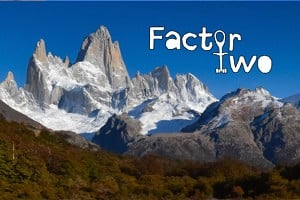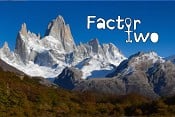
My partner and I are going on a 10 days/11 nights camping trip in the arctic circle, we will be using a preheating canister stove. I am calculating how much fuel I need, but don't really have a tonne of experience with accurate long trip fuel needs. Obviously we will be careful with our usage and only likely need breakfast and dinner, plus water.
I read one estimate that said for snow melting, for two people around 60g of fuel per day would be needed. For 11 days that would be 3 x 230g canisters (probably will use Primus Winter Gas). Is that really enough? In my head I was expecting more, but that estimation was based on nothing.
Cheers
The performance of the stove will drop off as the canister empties so you will probably use more gas (although the winter gas is supposed to perform better). Also depends how much water you will require. The link below is a spreadsheet which you could play around with to see how much gas you need and the effect of small changes.
http://howardjohnson.name/Backpacking/Stove/Stoves.htm
No expert, but that won't stop me contributing! 3 cannisters sounds a bit light to me. Maybe three of the double sized ones?
Is the 3 cyclinders estimate an estimate purely for melting snow into water, rather than heating it and cooking as well?
Much will depend also on how thirsty you are. If active you can expect getting through lots of water in a day let alone eleven.
Do you have to carry it all? If not, take 11 cannisters
Where about's in the Arctic cycle are you heading? can you re-supply on route?
Interesting table, but I must be using it wrong as it seems to think I would need about 11+ kilos of fuel for 5 pints of water a day?!
No dice I'm afraid! Will be in the Urho Kekkonen national park which once in the wilderness area should be only huts and snow
I work on one 500 or 2 x 250, lasting 15 days in summer that's solo and not using a preheating type stove. So 3 x 250 for two + snow melting over 11 nights does sound too little.
How tight are you for weight? If you're using pulks then I'd be inclined to tripe that amount, if you're carrying it maybe you could get away with doubling.
I don't know the area you're going to is it above the treeline? If not you could substitute a wood fire for some of your time.
When melting snow in the Alps I work on 150g (or 200ml of petrol) per person per day plus 20% reserve if you risk being blocked by bad weather. This seems to be enough to melt snow and make plenty of tea and cook.
For two people and eleven nights that would be 150*2*11*1.2 = 4000g of fuel.
What has worked well is taking a gas stove and a liquid fuel one. Gas for the morning and liquid fuel for the endless snow melting in the afternoon. For redundancy I'd imagine that you'd want at least two stoves as not being able to melt water could be somewhat problematic.
If you're dragging a pulk then space probably won't be an issue but for rucksack based touring liquid fuel takes far less space.
Your calculations sound a bit optimitstic to me but I have never sat down to actually calculate the maths.
It depends a bit when you are going and what temperatures are likely to be like. If it's summer, will there be water you can collect? If you have to get all your water from snow then cold snow (e.g. if it's -10/15C) uses a lot more gas than warm snow (e.g. if it's -5C). From my experiences, melting snow for drinking water is the biggest drain on your fuel by far compared to actually cooking.
Are you sure a liquid fuel stove wouldn't be more appropriate for your uses if you are melting all your drinking water for 11 days? You can at least keep the pressure up in the tank rather and you aren't lugging around near-empty gas cannisters.
On a recent (very short) overnight trip I used one of the Alpkit brukit stoves for melting snow, and one of the primus 230g cartridges melted 4.5L of water, of which about 3L needed boiled and I used about 2/3 of the cannister. Had we needed to melt another 4-6L for drinking water (if we had been walking all day) then I think that would have used almost all of the cannister (that equates to 230g per day for 2 people).
Similarly, in Alaska we used a smaller jetboil and if I recall correctly 2x100g coleman cannisters melted about 10-12L of snow, only about 2L of which was boiled (but the snow was 'warm' snow not 'cold' snow) - which gives a roughly similar perfomance I guess??
I think it will vary on many factors, especially the amount of water you need to boil (for dehydrated meals etc.) but if snow if your only access to water you will want to be able to make at least 10L of water per day for the two of you, and some of that will need to be boiled.
I *suspect* that you would need an absolute minimum of 300-400g of fuel per day if using gas.
Ok seems like a lot of real world calculations putting it at around 4/4.5 kg of fuel or like 10 large gas canisters. 5 each, not so crazy... We could probably return the unused ones to the shop on the way back, and it will all be on pulks so and extra weight wouldn't be so brutal.
Any more input always appreciated to increase data points, but the replies so far have been very helpful - thanks all
I think thats an over estimate and the OP is underestimating. On a recent trip to Alaska as a team of three we used about 4.5 x 450g MSR IsoPro for all snow melting and preparing hot and cold water for drinks and rehydrating freeze dried food for 9 days on a single Primus Primetech*. That was in some pretty cold temperatures at times (-25C). That works out at about 75g fuel/day/person. My experiences elsewhere have been similar. In my opinion a modern gas stove and heat exchanger pan is far more efficient, easier and cleaner than a liquid fuel system.
*A great stove for winter expedition use https://www.ukclimbing.com/forums/t.php?t=662453
Try the spreadsheet from Hiking Jim:
https://adventuresinstoving.blogspot.com/2017/08/interactive-canister-gas-e...
I'll be taking my Primus Eta Spider I guess stove pros and cons will always be debated, for serious expedition use I'd probably get an XKG, as it's so field serviceable and powerful. If I can get away with it though I'll stick to gas for all the reasons you mentioned!
You threw a spanner in the gears though! 1.5kg vs 4kg of fuel is a big difference!
Just been reading up on this area, it sounds great.
If you're using the open wilderness huts it looks like many of them are in the forested areas and have wood burning stoves, should save you some gas.
I think Dave is on the money with 75g per person per day. FWIW, here is how I calculate fuel consumption:
Let's say you need 3L water per person per day, 1.5L of that boiled, all from -10 deg C snow.
BTW, Melting snow/ice needs 80% (0.8x) of the energy of heating liquid water by 100C
1) Work out the "equivalent litres boiled per day"
Heating enough snow for 3L water from -10 C to 0C (still frozen)
2) Multiply "equivalent litres" by gas needed to boil 1L
Remote canister stoves - in the real world - might use 12-20g fuel per L boiled (0 C to 100 C)
If we say a conservative 18g/L (An Eta Spider, carefully used , would be more efficient) , we get
3) Multiply by people and days.
Multiply by 2 people, by 11 days, and you need - theoretically -> 1660 g fuel.
Naturally the above is just an example - adjust the values, then multiply by a safety factor as appropriate.
A stove setup can be calibrated by boiling 1L of water, and weighing the canister before and after.
Note in this example, 57% of the fuel is used just to melt the snow, from 0C frozen to 0C liquid. If some of the water is available as liquid instead of ice or snow, there is big saving in gas.
I think some of them even have gas cookers too which could be a good tool if we did somehow run low! Hoping it will be a great trip, next month now!!
Pretty much all Finnish huts have a wood burning stove for heating and cooking. Also gas stove might be available.
But the available wood might be all out, same for gas.
Oh, water might be available in streams near the huts. Axe (from the hut) comes in handy for making the hole.
Just tested my stove and at room temperature it boils 1L of water with 12g of gas. Multiply that by 3 (could be more I guess depending on conditions, but for the sake of calculation) and you have: 36g x 8L of water a day x 11 days = 3344g of gas, or 7.5 canisters.
10 should see us safely back then?
Genuine question - why not a petrol stove.?? I appreciate gas is super convenient, it's what I normally use, but for melting snow petrol is much faster
There a pain to travel with, airlines won't take them.
For reference (you can scale down the people and days)
https://www.ukclimbing.com/forums/expedition+alpine/camping_gas_calculation...
I'd suggest using 500 gram canisters if you can and to take a minimum of 3500 grams (so x7 of the 500 gram.)
It would also probably be a good idea to have a spare stove.
Above all ,I would second the use of petrol/white spirit burners. I've never had problems getting mine on a plane (have always cleaned it. Then wrapped it up well. Then put inside a pot.
Yeah they will, I've had no problem with the stove or bottle in hand luggage - the bottle just looks like a drinky bottle.
Efficiency and speed are not the same thing. A modern gas stove and heat exchanger pan system is more efficient therefore less fuel need be carried. I know many people are convinced that liquid fuel stoves are better for snow melting but, at least in my not inconsiderable experience, it is simply not true. Especially if you are starting from dry cold snow it is easier to manage the melting process on a gas stove than a roaring MSR XGK. Another important factor is that a regular propane/butane gas mix has more energy/g of fuel than white gas or kerosene.
From the figures on MSR's website an XGK will boil 1.5l of water/oz of white gas. The Reactor will boil 2.8l per oz/gas and even a Pocket Rocket will boil 2.0l per oz/gas. I've had no problems using the tiny MSR Pocket Rocket to snow melt and provide all hot water for food and drinks for three people for a week in Antarctica when our main stove, a crappy Jetboil, broke.
Interesting points! My Spider system is incredibly quick and efficient so I'm not surprised by your calculations. I suppose the only downside to a gas stove is they are slightly harder to service when they do eventually block up, you have to take lots of empty canisters out with you, it's less flexible if you can't find canisters, and less likely to work properly at -50. Still, many of those situations are extremely unlikely in most cases.








